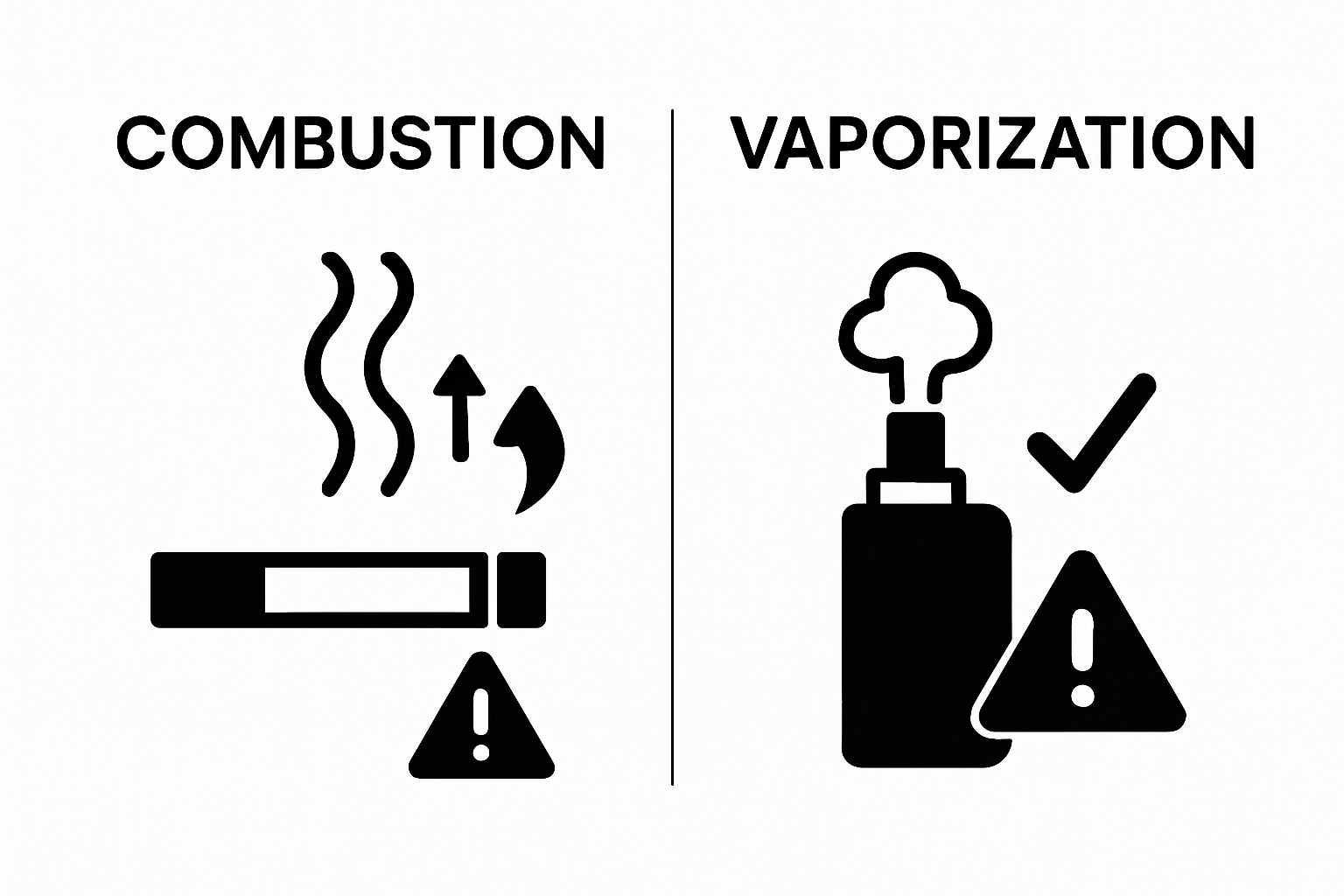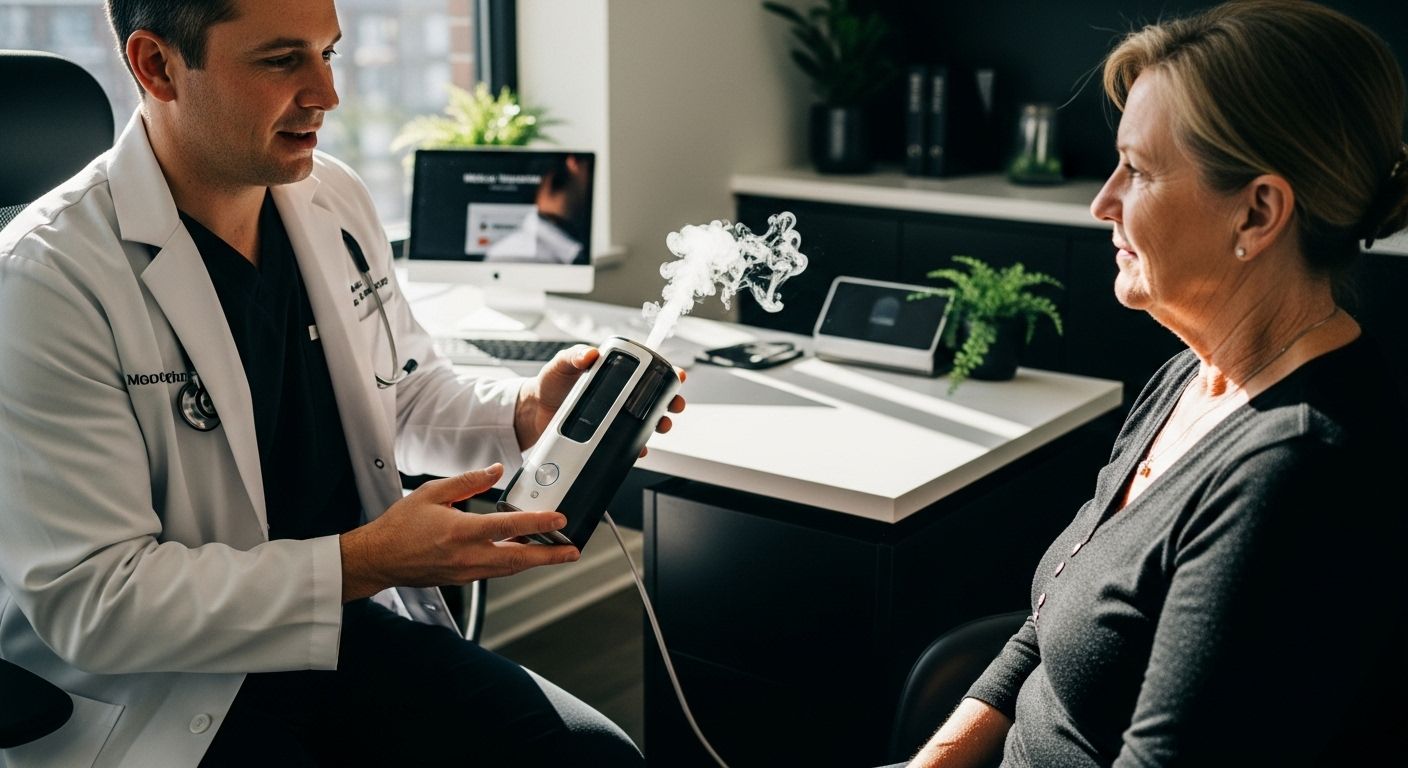Blog Posts
What is Vaporizer Technology? Understanding Its Impact
Vaporizer technology is changing the way people consume everything from medicine to botanicals. But while old-school smoking still dominates headlines, vaporization quietly sidesteps most of the health risks. Here is what might surprise you most: vaporizers heat substances to between 285 and 446 degrees Fahrenheit, keeping active compounds safe while avoiding the toxic byproducts of burning. That single detail explains why this tech keeps gaining fans in hospitals and homes everywhere.
Table of Contents
- Defining Vaporizer Technology: What Is It?
- The Importance of Vaporization: Why It Matters
- How Vaporizer Technology Works: The Science Behind It
- Key Concepts in Vaporizer Technology: Understanding the Basics
- Real-World Applications of Vaporizer Technology: Who Uses It and Why
Quick Summary
| Takeaway | Explanation |
|---|---|
| Vaporization reduces harmful byproducts. | Vaporization avoids combustion, minimizing toxic substances that harm respiratory health during consumption. |
| Precise temperature control enhances effectiveness. | Controlled heating improves the extraction of active compounds, ensuring users receive a consistent experience tailored to their needs. |
| Versatile applications exist across multiple domains. | Vaporizer technology is utilized in medical, recreational, and therapeutic settings, demonstrating its broad appeal and effectiveness. |
| Customizable user experiences are possible. | Users can modulate settings to personalize their consumption, enhancing satisfaction and engagement with different substances. |
| Rising importance in modern substance consumption. | As technology evolves, vaporization becomes a preferred method for safer and more effective delivery of various compounds. |
Defining Vaporizer Technology: What Is It?
Vaporizer technology represents a sophisticated method of converting liquid or solid substances into vapor without combustion, enabling precise delivery and consumption of active compounds. At its core, this technology transforms materials into a gaseous state through controlled heating, allowing users to experience substances without the harmful byproducts associated with traditional burning methods.
The Scientific Mechanism Behind Vaporization
The fundamental principle of vaporizer technology centers on thermal transformation. By applying targeted heat below the combustion point, vaporizers convert substances into an inhalable aerosol. This process occurs at temperatures significantly lower than traditional burning, typically between 285 to 446 degrees Fahrenheit, which preserves the molecular integrity of active compounds while preventing the production of toxic combustion byproducts.
Types and Applications of Vaporization Technology
Vaporizer technology spans multiple domains, each with unique applications:
- Medical Vaporizers: Used in anesthesia delivery, allowing precise control of gaseous anesthetic agents during surgical procedures
- Cannabis Consumption Devices: Enabling controlled heating of botanical materials to extract cannabinoids without combustion
- Electronic Nicotine Delivery Systems: Transforming liquid nicotine solutions into inhalable vapor
According to National Center for Biotechnology Information, vaporization represents a significant technological advancement in substance delivery, offering enhanced control and reduced health risks compared to traditional consumption methods.
The technology’s versatility lies in its ability to extract active compounds efficiently while minimizing harmful thermal degradation, making it a preferred method across medical, recreational, and therapeutic contexts.
Below is a table summarizing the different types of vaporizer technology and their primary applications across various domains discussed in the article.
| Vaporizer Type | Primary Application | Domain |
|---|---|---|
| Medical Vaporizers | Precise delivery of anesthetic agents | Medical |
| Cannabis Consumption Devices | Controlled extraction of cannabinoids | Recreational/Medical |
| Electronic Nicotine Delivery Systems | Transformation of nicotine solutions to vapor | Consumer/Recreational |
| Herbal/Botanical Extract Vaporizers | Release of active compounds from botanicals | Therapeutic/Wellness |
| Aromatherapy Vaporizers | Targeted diffusion of essential oils | Therapeutic/Wellness |
The Importance of Vaporization: Why It Matters
Vaporization technology represents a transformative approach to substance consumption, offering significant advantages over traditional methods of delivery and ingestion. By providing precise, controlled heating mechanisms, this technology addresses critical health, efficiency, and experiential considerations across multiple domains.
Health and Safety Implications
Reduced Harmful Byproducts is the primary advantage of vaporization technology. Unlike combustion methods that generate numerous toxic compounds, vaporizers heat substances at lower temperatures, minimizing the production of carcinogenic and irritating particulates. This approach significantly reduces respiratory risks associated with traditional smoking or burning techniques.

Efficiency and Compound Preservation
Vaporization enables superior compound extraction by maintaining the molecular integrity of active ingredients. The controlled heating process allows for more complete and targeted release of desired compounds, ensuring users receive a more consistent and potent experience. This precision is particularly crucial in medical and therapeutic applications where dosage and compound purity are paramount.
Versatility and User Experience
The technology offers unprecedented versatility across various consumption contexts:
- Medical Precision: Enables exact dosage control for pharmaceutical and therapeutic applications
- Recreational Customization: Allows users to modulate temperature and experience
- Discretion and Convenience: Produces minimal odor and provides portable consumption options
According to Canadian Family Physician research, vaporization can significantly reduce respiratory irritation compared to traditional combustion methods, highlighting its potential as a harm reduction strategy.
As technological innovations continue to refine vaporization techniques, the potential for improved user experiences and health outcomes becomes increasingly promising, positioning this technology as a critical advancement in substance consumption methodologies.
How Vaporizer Technology Works: The Science Behind It
Vaporizer technology operates through a sophisticated process of thermal energy transfer and state transformation, converting substances from liquid or solid to gaseous form without combustion. This intricate mechanism relies on precise temperature control and specialized engineering to deliver a controlled, efficient substance delivery system.
Thermal Energy and Phase Transition
The core principle of vaporization involves applying targeted thermal energy to substances at temperatures below their combustion point. This controlled heating causes molecules to vibrate and transition from a condensed state to an aerosol, creating a fine mist of active compounds without triggering destructive chemical reactions associated with burning.
Components and Technological Architecture
A typical vaporizer system comprises several critical components working in synchronized precision:
- Heating Element: Responsible for generating controlled thermal energy
- Temperature Regulation Mechanism: Ensures consistent and precise heating
- Substance Reservoir: Holds the material to be vaporized
- Airflow System: Facilitates efficient aerosol delivery
These integrated components collaborate to transform substances into an inhalable vapor with minimal molecular degradation, maintaining the purity and potency of active compounds.
This table provides a concise overview of the key components commonly found in vaporizer devices, as described in the article, highlighting their specific roles in the vaporization process.
| Component | Function |
|---|---|
| Heating Element | Generates controlled thermal energy for vaporization |
| Temperature Regulation Mechanism | Maintains consistent and precise substance heating |
| Substance Reservoir | Holds liquids or solids to be vaporized |
| Airflow System | Facilitates efficient aerosol delivery to the user |
| Microprocessor Control | Enables user customization and advanced temperature modulation |
Precision Engineering and User Experience
Advanced vaporization technology incorporates microprocessor-controlled heating systems that can modulate temperature within fractions of a degree. This unprecedented precision allows users to customize their experience, extracting specific molecular compounds at optimal temperatures.
According to Electronic Cigarette Research, the engineering behind modern vaporizers represents a significant leap in controlled substance delivery, transforming how we understand thermal energy manipulation and molecular extraction.
The continuous evolution of vaporizer technology demonstrates the remarkable intersection of physics, chemistry, and user-centric design, promising increasingly sophisticated methods of substance consumption across medical, recreational, and therapeutic domains.
Key Concepts in Vaporizer Technology: Understanding the Basics
Vaporizer technology represents a sophisticated intersection of thermodynamics, material science, and user experience design. Understanding its fundamental principles requires examining the intricate mechanisms that transform substances from solid or liquid states into precise, controlled aerosols without combustion.
Fundamental Physical Principles
Thermal Energy Transfer stands as the cornerstone of vaporization technology. Unlike traditional burning methods, vaporizers utilize controlled heating mechanisms that transform substances by exciting molecular structures without causing complete chemical breakdown. This process involves carefully managed temperature ranges that trigger phase transitions while preserving the molecular integrity of active compounds.
Critical Technological Components
The effectiveness of vaporization depends on several interconnected technological elements:
- Precise Temperature Control: Enables extraction of specific molecular compounds
- Advanced Heating Elements: Generate consistent thermal energy
- Intelligent Airflow Systems: Facilitate efficient aerosol generation
- Material-Specific Design: Adapts to different substance characteristics
These components work synergistically to create a controlled substance delivery mechanism that maximizes efficiency and user experience.
Performance and User Interaction
Modern vaporization technologies incorporate microprocessor-controlled systems that can modulate temperature with remarkable precision. This technological advancement allows users to customize their experience, extracting specific molecular compounds at optimal temperatures. Learn more about cannabinoid interactions in vaping to understand how precise temperature control impacts compound extraction.
According to Anesthesia Equipment Research, the principles underlying vaporization demonstrate how sophisticated thermal management can transform substance delivery across medical, recreational, and therapeutic domains.
The continuous evolution of vaporizer technology reflects an ongoing commitment to understanding molecular transformation, user experience, and the intricate science of controlled substance delivery.
Real-World Applications of Vaporizer Technology: Who Uses It and Why
Vaporizer technology has emerged as a transformative solution across multiple domains, offering precise, controlled substance delivery with minimal health risks. Its versatility and technological sophistication have enabled widespread adoption in medical, recreational, and therapeutic contexts, revolutionizing how substances are consumed and experienced.
Medical and Therapeutic Applications
Healthcare professionals utilize vaporization technology for targeted medication delivery, particularly in scenarios requiring precise dosage and rapid absorption. This approach is especially critical in pain management, respiratory treatments, and neurological interventions. Medical vaporizers allow clinicians to administer compounds with unprecedented control, minimizing systemic side effects and maximizing therapeutic efficacy.

Recreational and Consumer Contexts
Consumer applications of vaporization technology span diverse lifestyle segments:
- Cannabis Consumption: Enables controlled cannabinoid extraction
- Nicotine Delivery: Provides alternative to traditional smoking
- Herbal and Botanical Extracts: Facilitates precise compound release
- Aromatherapy: Allows targeted essential oil diffusion
These applications demonstrate the technology’s flexibility in meeting varied user preferences and consumption requirements.
Emerging Professional and Specialized Uses
Beyond traditional applications, vaporizer technology is finding innovative uses in specialized professional domains. Explore advanced cannabinoid vaping techniques to understand the nuanced potential of this technology.
According to Medical Cannabis Research, vaporization represents a significant advancement in substance administration, offering controlled delivery with reduced potential for respiratory irritation.
The continuous evolution of vaporizer technology reflects a broader trend towards personalized, precise, and health-conscious substance consumption methods, promising further innovations across medical, recreational, and therapeutic landscapes.
Experience the Power of Modern Vaporizer Technology in Your Daily Life
Are you ready to move beyond outdated smoking methods and embrace the health-focused innovations discussed in our article on vaporizer technology? Our Blog Posts Archives – Trinity Spinny is filled with educational resources that dig deeper into the science behind thermal energy transfer, precise compound extraction, and user-controlled experiences. Discover how high-potency cannabinoids and advanced features are being used to redefine what vaping can offer.

Make your next step count. Explore our curated selection at Trinity Spinny where you will find premium disposable vapes packed with THCa, Delta 8 THC, and live resin. Each device is engineered to protect compound quality and provide custom settings so you can enjoy a pure and consistent experience. Whether you are interested in safer recreational options, medical efficacy, or just modern convenience, Trinity Spinny offers both education and solutions for your vaping journey. Visit today and experience the benefits for yourself.
Frequently Asked Questions
What is vaporizer technology?
Vaporizer technology is a method that converts liquid or solid substances into vapor without combustion. It allows for the precise delivery of active compounds while minimizing harmful byproducts associated with traditional burning methods.
How does vaporization work?
Vaporization works by applying controlled heat to substances below their combustion point, causing them to transition from a condensed state to an aerosol. This process maintains the molecular integrity of active ingredients, creating an inhalable vapor.
What are the health benefits of using vaporizers?
The primary health benefit of using vaporizers is the reduction of harmful byproducts. Unlike traditional combustion methods, vaporizers produce fewer toxic compounds, thereby decreasing respiratory risks and enhancing user safety during consumption.
What types of materials can vaporizers be used with?
Vaporizers can be used with a variety of materials, including medical compounds, cannabis, liquid nicotine solutions, and herbal extracts. Each type of vaporizer is designed to deliver specific substances effectively while optimizing their active compounds.
Recommended
- How Multiple Cannabinoids Enhance Your Vaping Experience
- Exploring the Advantages of Dual Flavor Technology in Vaping
- How to Maintain and Care for Your Trinity Spinny Device
- Trinity Spinny’s Innovative Approach
Article generated by BabyLoveGrowth

